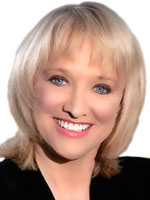Video in premises-liability litigation can show them what your case is worth
A well-produced video documentary can bring your case to life in a way that opposing counsel or an insurance adjuster won’t forget
An elderly, disabled woman heads out to lunch with her family. As they leave the restaurant, her wheelchair hits a defect in the walkway. Suddenly, she is thrown to the pavement. After rounds of treatment fail, doctors must amputate her legs. The facts of the case are clearly compelling.
But words, read or spoken, can’t convey the horror of watching the woman’s daughter hoist her mom in a Hoyer-Lift as the stumps of her mom’s legs come into view. They can’t show mom, in happier times, laughing on birthdays and holidays, enjoying life from her wheelchair. They can’t capture the look in mom’s eyes as she tearfully tells the camera that she now just wants ‘to die.’ That’s the power of video.
While a legal brief can present compelling facts, video hits the emotional chords that you need to win the argument. It forces the viewer to acknowledge on a visceral level, ‘This person is suffering. I can feel her pain. That could be my mother… that could be me.’
At the very least, it can make a jaded defense attorney or veteran insurance adjuster quietly think, “I wouldn’t want a jury to see this.”
Attorney Spencer Lucas of Panish, Shea and Boyle knows the value of video. He has used video documentaries to achieve his desired settlement. As Spencer puts it, “A journalist-caliber settlement video explaining the evidence is sometimes the only way to get a stubborn adjuster to see the light of day.”
With premises liability, a well-constructed video can take viewers in the mediation room – or the courtroom – directly to the scene in an intimate way. They can see and hear that one-ton condo gate rolling slowly down its track. They can sense its heaviness as it came crashing down on your client. They can see construction rigs bouncing down the same shoddy road that left one worker paralyzed. They can peer down the elevator shaft where a worker fell several stories after a poorly trained technician failed to place an out-of-order sign.
Attorney Lalit Kundani of Kundani & Chang LLP notes, “In a premises-liability case especially, it’s often the plaintiff versus a house, a parking lot, a restaurant, or some other inanimate, impersonal setting. Video allows for that amorphous defendant to be visualized in an effective way at trial, while telling a very compelling story that remains in the jury rooms during deliberations.”
You can use video for either court or mediation – or both. It depends on the format. A settlement documentary can show the strength of your case in a 10-20 minute Dateline-style video with narration. It can contain damages, liability or both. This format is a skillful blend of key interviews that can include the victim, family members, friends, co-workers, witnesses and experts – along with photos, home videos, medical records, animation, police reports and a site inspection. It will also include expertly shot, day-in-the-life video that shows the current struggle that your client faces due to the defendant’s negligence. This expansive format often includes narration. It is used for mediation.
As Attorney Matt Biren of Biren Law Group sees it, “There is simply no more powerful way to present your case at mediation than through a video brochure or day-in-the-life film, where creativity can be unlimited, because there are no rules of evidence in mediation.”
In a premises-liability case, a settlement documentary holds another unique advantage. Your case likely includes technical experts who can explain exactly why the defendant is liable, perhaps a specialist to relate the scientific reasons that the propane tank exploded or an engineering consultant who can detail the mechanics that caused a 500-pound oven to fall off the forklift and paralyze your client.
One more video format to consider, the stand-alone Day-in-the-Life video, is both persuasive and versatile. It can be used for settlement but may also be admissible at trial. Just like breaking TV news, the video must be shot as it unfolds. The story is meant to capture key moments in your client’s day. The production team cannot re-shoot a scene to get a better angle. The edited video uses simple cuts, dissolves, and only natural sound.
No matter what format you choose, a compelling video should take your viewers directly to the scene. They should see where the client was injured and understand why. They should feel what your client felt. When you want a mediator, opposing counsel, or a jury to walk in your client’s shoes, don’t leave your case on paper. Let it come to life. A powerful video can give you the edge.
Christina Penza

Christina Penza is an Emmy Award winner and 6-time Emmy nominee. She spent nearly 30 years as an investigative TV reporter and producer working mainly in NYC and LA. Christina now owns and operates Attorneys’ Edge Productions. Christina@attorneysedge.video.
Copyright ©
2025
by the author.
For reprint permission, contact the publisher: Advocate Magazine
